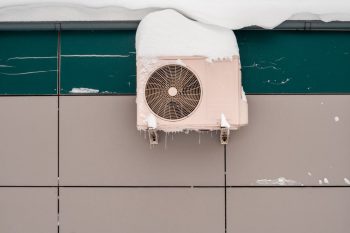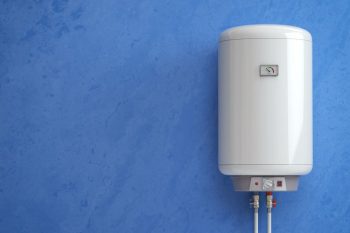
Doing laundry is one of the most tedious chores around the house. That is why many homeowners opt to get washing machines to get the job done.
However, have you ever considered what would happen if your washer floods?
Few people do not put too much thought into the washing machine overflowing or leaking.
Flooding can cause considerable water damage to the house and its foundation. Wet floors and walls are also ideal places to grow black mold, algae, and moss, which can be a health hazard.
It is always better to be prepared when your washing unit leaks or overflows.
We will look at some things you should do to fix the flooding and minimize water damage.
If you are dealing with a washing machine flooding, you need to turn off the water and power supply to the washing machine.
Afterward, you should empty the unit before cleaning the room to prevent further water damage.
Lastly, identify the cause of the problem and air the room to help dry it and remove excessive moisture.
Is your washing machine flooding? Stick around and learn more about safety procedures to fix the issue.
6 Steps To Fix Your Washing Machine After Flooding
As previously stated, flooding can considerably damage your property. It is vital to fix the issue as fast as possible to prevent expensive repairs to the property.
Here is a step-by-step guide to help with your washing machine flooding and fix any water damage on your property.
1. Turn Off the Water Supply
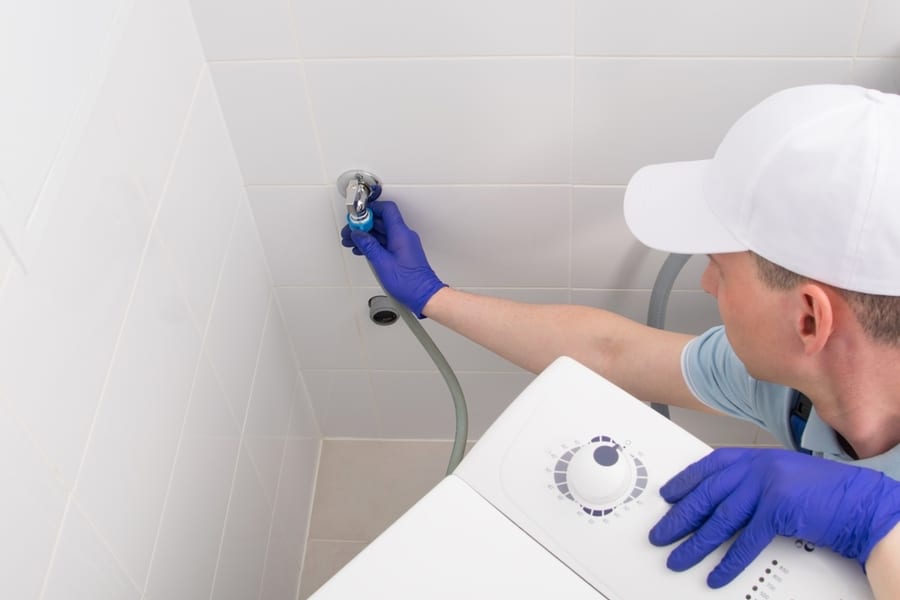
The first thing that you need to do is turn off the water in the washing machine.
Turning off the water supply prevents water from causing extensive damage and also prevents electrocution when fixing the washing appliance.
You can turn off the water at the machine’s water valve.
For extra precaution, you can also turn off the main water supply in the house, just in case the water is leaking from pipes around the laundry room.
2. Unplug the Washing Machine

The next step is to unplug the washing machine. Switching off the unit or canceling a load might lead to more flooding.
Most washers drain water automatically if switched off or stopped mid-cycle, which can be a potential problem if you have a leaking drain pipe.
Unplugging the washer if the room is flooded is dangerous, especially if the outlet is in the same room. You need to turn off the main power supply to the house. Afterward, you can unplug the washing machine.
If you are having trouble unplugging the washer, do not tag on the cord, as it can break.
The best thing to do is to wiggle the plug gently until the pins start showing. You can also use insulated clamps to remove the plug.
3. Empty the Washer
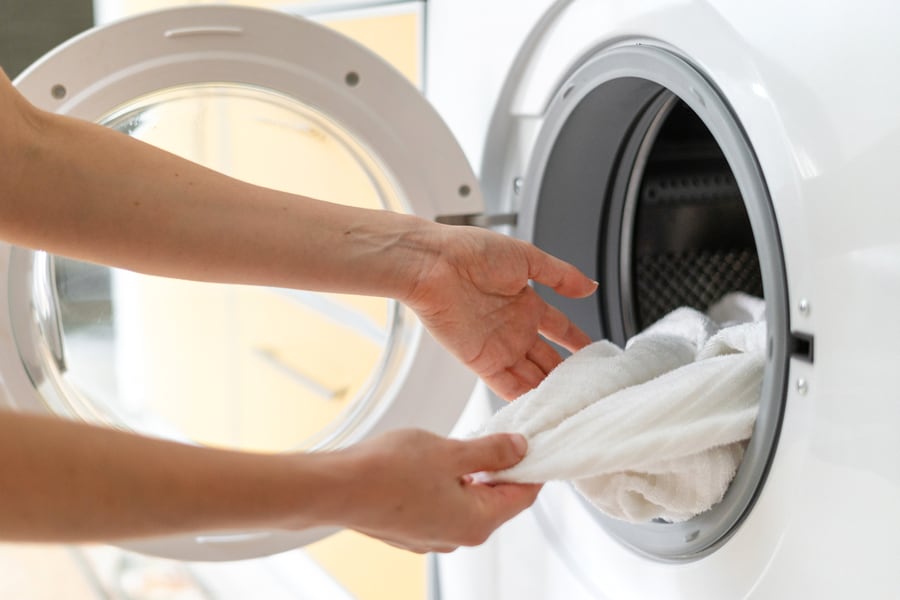
The next thing you need to do is remove laundry and water from the washer. Emptying the unit will give you better access when identifying what might be causing the problem.
For top-load washing appliances, all you need to do is lift the door, and you can take out the laundry.
On the other hand, front-load washers have a door lock that prevents the lid from opening if the unit is not drained.
Before opening a front-load washer, you should wait for all the water to settle at the bottom of the drum. It will prevent too much water from overflowing out of the washer.
Different front-load washers have different procedures to open the door, so you should consult your user manual on how to do it.
Once you remove clothes, you should use a bucket to drain the water in the drum. You can also use a wet/dry vacuum to suck the water out.
Take the clothes and air dry them on the washing lines to prevent them from mold growth.
4. Clean What You Can
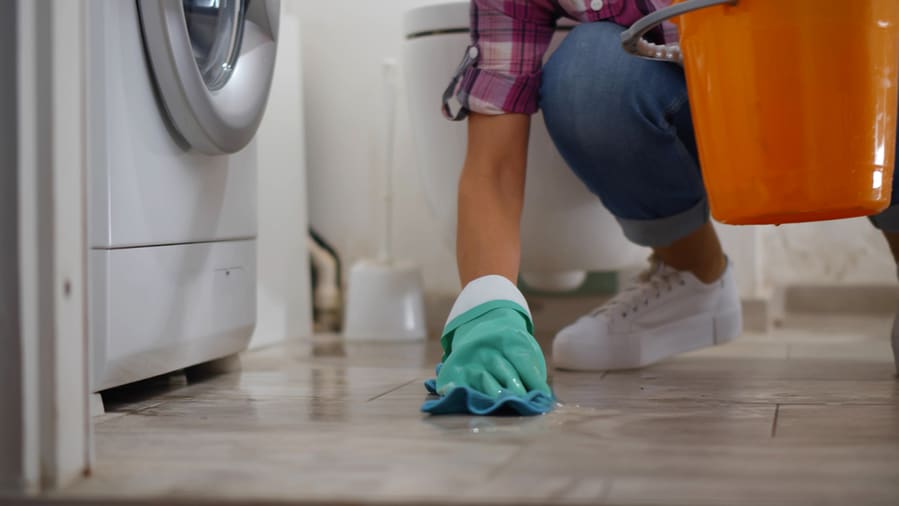
The third step is cleaning up as much water as you can. You can use a few towels or rags to soak up the water and squeeze it into a bucket.
Getting a wet/dry vacuum cleaner and large fans can help you dry the laundry room more effectively for large amounts of flooding.
In addition, you should also take out any furniture, carpets, or other items in the flooded area. You must properly dry them out to prevent them from getting mold or wood rot.
Since water from the washer does not have a lot of harmful contaminants, the items can be easily dried and salvaged if you are quick enough.
However, if you notice some areas are still wet even after drying the room, you should call a professional home cleaner to help.
If the water soaks into the floor or walls, experts can help dry it out before it causes lasting damage to your property.
5. Identify the Problem
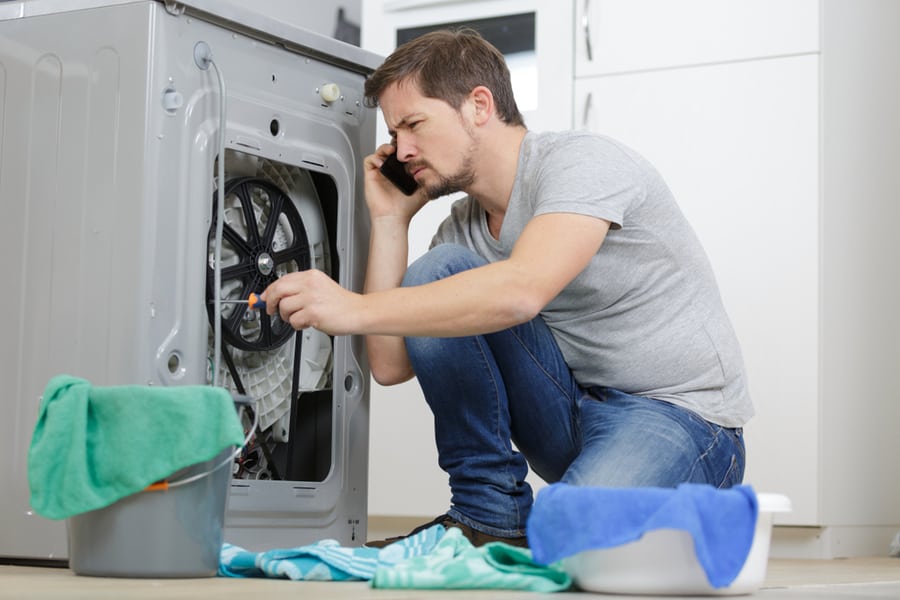
Identifying the cause of the leak is integral to figuring out why your washer might be flooding. Let us look at possible reasons for the problem and how to fix them.
Broken or Dirty Door Seal
The watertight seals on the unit’s door prevent water from spilling and overflowing during a washing cycle. However, broken or dirt seals do not work efficiently, leading to flooding.
If you notice dirt stuck on the seals, you can use a wet cloth to clean it out gently. However, a certified expert should replace a broken seal to prevent damage to the washer.
Damaged or Lose Hoses
Another problem causing your washer to flood is broken or loose hoses. Leaking pipes occur more often than you think.
If the intake or drain pipes are loose, you need to secure them firmly back into the washer.
However, always replace damaged or broken pipes. Ensure that pipes are manufacturer-recommended as they operate better and last longer.
Accumulation of Suds
Excess suds can also lead to the washer overflowing.
Suds are the foam and bubbles that form during a washing cycle. The buildup of suds can leak out of the washer, causing flooding.
Excess suds issues should not give you any problems if they are the cause of the flooding.
After cleaning up, all you need to do is to use a small amount of high-efficiency detergent when doing your laundry.
Unsecure Door
The other reason your washing unit might be flooding is an unsecured door. Water can easily leak when the door does not close firmly during a washing cycle.
To fix the issue, you must check whether the hinges are wiggling around or are not properly set.
A Phillips head screwdriver will help you tighten them, and your door should lock firmly.
6. Ventilate the Room

The last thing you need to do is to ventilate the room.
Opening the windows and door will let air freely circulate into the laundry space and dry out any excessive moisture. You should ventilate the room for a day or two to be on the safe side.
Conclusion
Dealing with a flooded washing machine can be a huge problem. If not correctly done, you might have to endure expensive repairs caused by water damage.
Regular maintenance can help prevent the washer from overflowing or flooding.
However, you should follow these simple steps when your washing unit starts flooding.
First, turn off its water and power supply and empty the drum. The next thing to do is clean the room and identify the cause of the flooding so that you can fix it.
Finally, you should always ventilate the room after you are done with the repairs.
If you still notice flooding in the laundry room, you should make a call to a washer repair professional. You should also call in a house cleaning service to help dry the water that might have soaked into the floors or walls.
Frequently Asked Questions
Will a Washing Machine Work After Flooding?
Though washers differ, most units will continue working if their electrical components are not damaged.
Work on the repairs as soon as possible to prevent damage to the machine or the house.
What Causes the Washing Machine To Flood?
The most common reasons for your washer flooding are damaged hoses, broken seals, or unsecured door latches.



